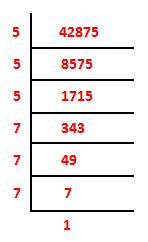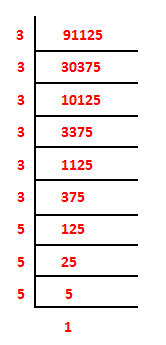CLASS-6
FINDING CUBE ROOTS
FINDING CUBE ROOTS -
Finding the cube root of a number involves finding a value that, when multiplied by itself twice, gives the original number. Like finding square roots, there are different methods to calculate cube roots. I'll explain two common approaches: the long division method and the Newton-Raphson method.
- Long Division Method:- This method is suitable for finding the cube root of any real number, but it can be time-consuming for large numbers.
Let's find the cube root of a number "N":
Step 1:- Start by grouping the digits of "N" into sets of three, starting from the decimal point (if there is one) and working towards the left. Add leading zeros to the left if necessary to make complete sets of three.
Step 2:- Find the largest cube that is less than or equal to the leftmost group of digits. Let's call this cube "x." Write "x" as the leftmost digit of the cube root.
Step 3:- Subtract "x^3" from the leftmost group of digits and bring down the next group of digits to the right of the result.
Step 4:- Double the current value of the cube root, and write the missing digit(s) to the right to form a three-digit number. Let's call this number "y."
Step 5:- Find the largest digit "d" such that "dy" (concatenating d and y) times "dy" times "d" is less than or equal to the result obtained in Step 3. Write "d" as the next digit of the cube root.
Step 6:- Subtract "dy" times "dy" times "d" from the result obtained in Step 3 and bring down the next group of digits.
Step 7:- Repeat Steps 4 to 6 until all the digits are processed.
Example.1) Let's find the cube root of 3375
Ans.)
Step 1:- Group the digits: 003 | 375 (add leading zeros if needed: 003 | 375)
Step 2:- The largest cube less than or equal to 003 is 1. Write 1 as the leftmost digit of the cube root.
Step 3:- 003 - 1^3 = 002; bring down 375.
Step 4:- Double the current value of the cube root: 1 * 2 = 2. Write 2 to the right to form "12."
Step 5:- Find the largest digit "d" such that "d * 12" times "d" is less than or equal to 002. The largest d is 1 (112 * 1 * 1 = 121).
Step 6:- 002 - 121 = 881; bring down nothing else as there are no more digits.
Step 7:- The cube root of 3375 is 15. (Ans.)
Another way of understanding -
Example.1) Find the cube roots of 42875
Ans.)

42875 = 5 X 5 X 5 X 7 X 7 X 7
= 5³ X 7³
Or, ∛42875 = ∛(5³ X 7³)
= ∛5³ X ∛7³
= (5³)⅓ X (7³)⅓ = 5 X 7 = 35
So, ∛42875 = 35 (Ans.)
Example.2) Find the cube roots of 91125
Ans.)

91125 = 3 X 3 X 3 X 3 X 3 X 3 X 5 X 5 X 5
= 3³ X 3³ X 5³
Or, ∛91125 = ∛(3³ X 3³ X 5³)
= ∛3³ X ∛3³ X ∛5³
= (3³)⅓ X (3³)⅓ X (5³)⅓ = 3 X 3 X 5 = 45
So, ∛91125 = 45 (Ans.)
2.) Newton-Raphson Method:- Newton-Raphson method is an iterative numerical technique used to approximate cube roots.
The formula for the Newton-Raphson method to find the cube root of "N" is: Xn+1 = (2 * Xn + N / Xn^2) / 3
Where: Xn+1 is the next approximation of the cube root. Xn is the current approximation of the cube root. N is the number for which the cube root is being found.
To use this method, start with an initial guess for the cube root (X0) and then repeatedly apply the formula until the value converges to a desired accuracy.
Example.1) Let's find the cube root of 3375 using the Newton-Raphson method.
Ans.)
Step 1:- Start with an initial guess, let's say X0 = 10.
Step 2:- Use the formula to calculate the next approximation: X1 = (2 * X0 + 3375 / X0^2) / 3 ≈ 15.58333333
Step 3:- Repeat the process with the new approximation: X2 = (2 * X1 + 3375 / X1^2) / 3 ≈ 15.55616847
Step 4:- Continue this process until you reach the desired level of accuracy.
The more iterations you perform, the closer the approximation will be to the actual cube root. In this example, the cube root of 3375 is approximately 15.55616847 (rounded to 8 decimal places).